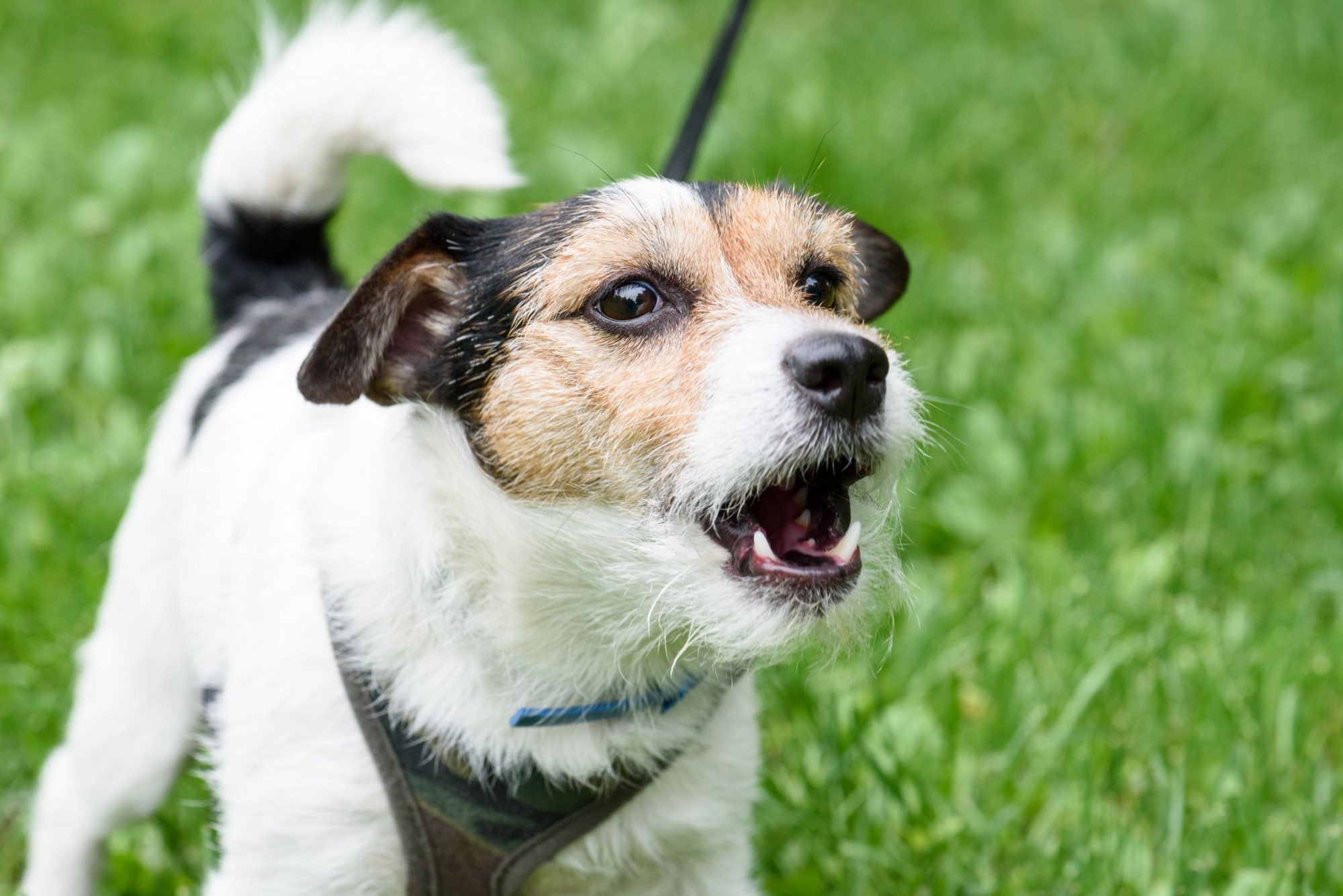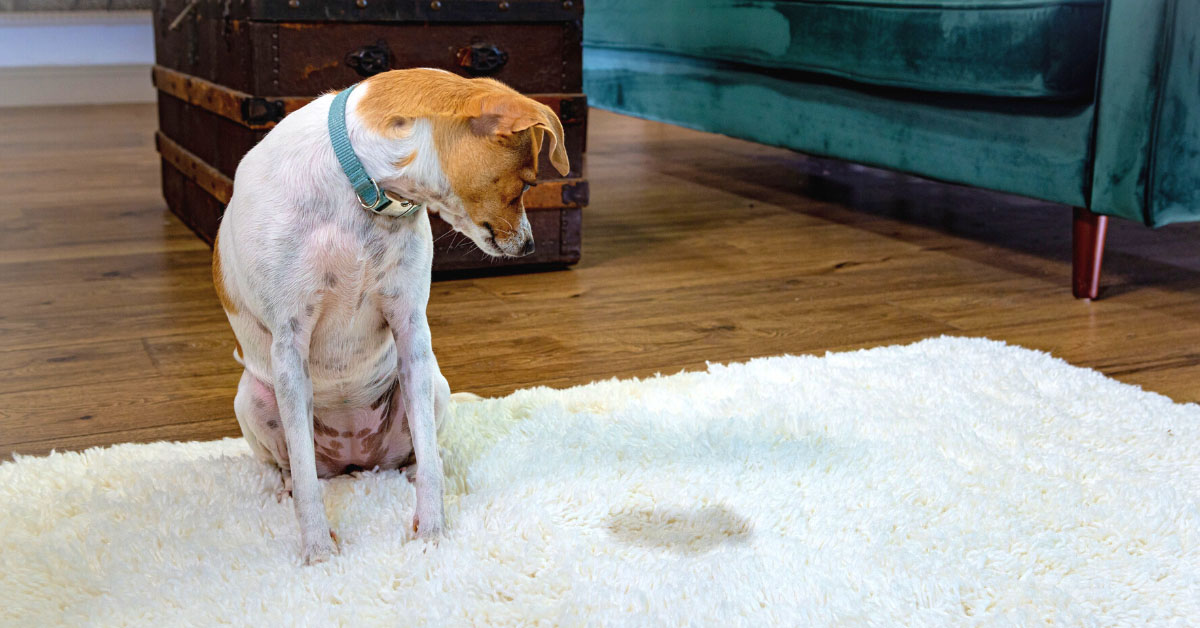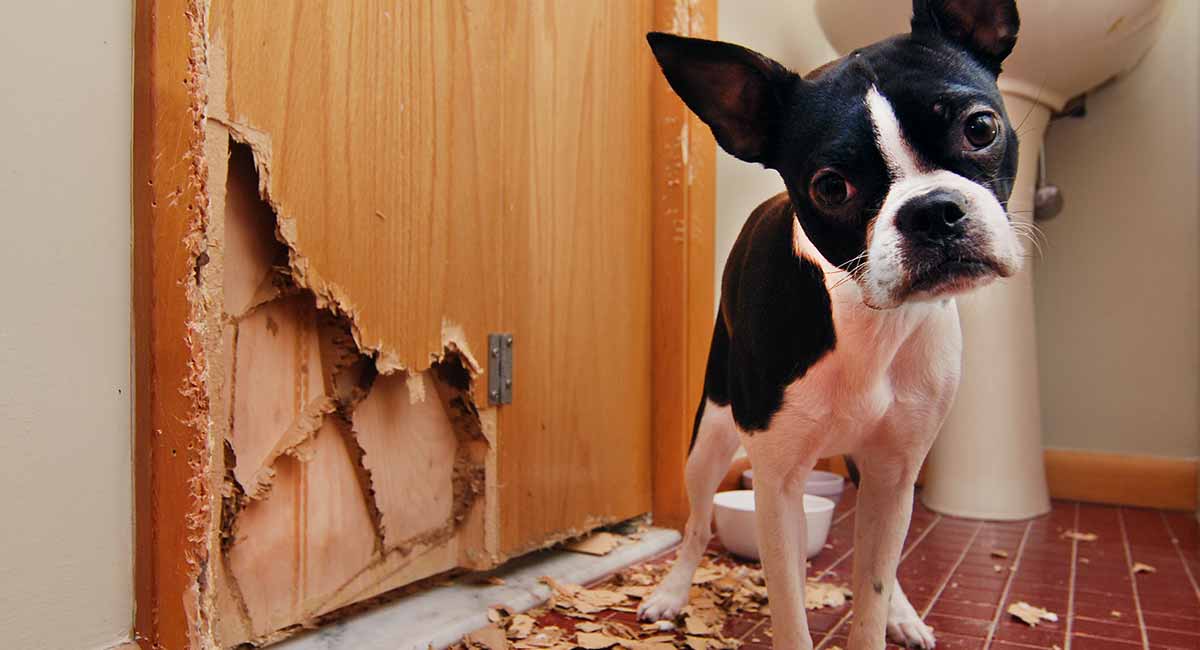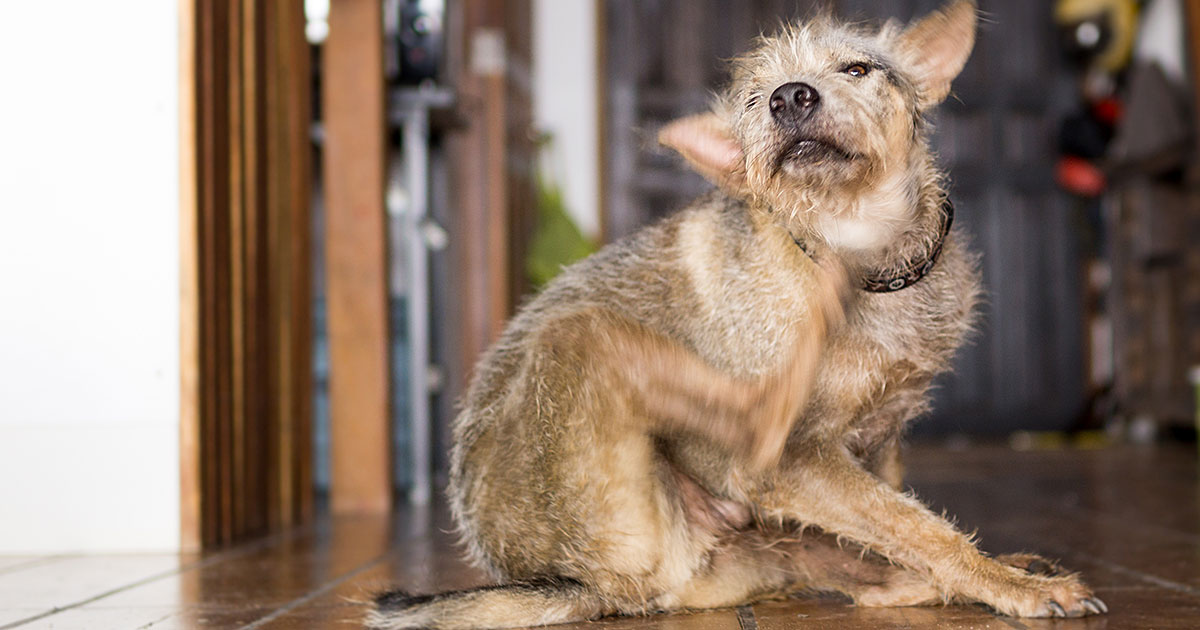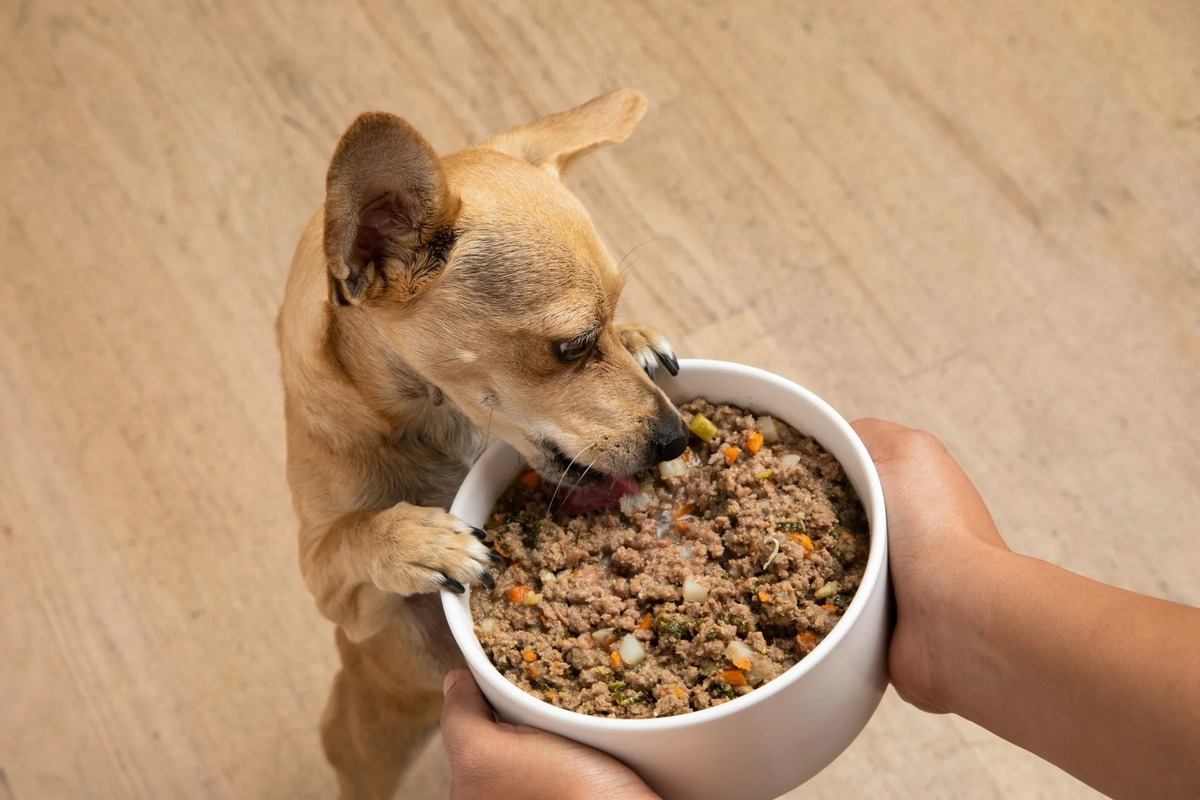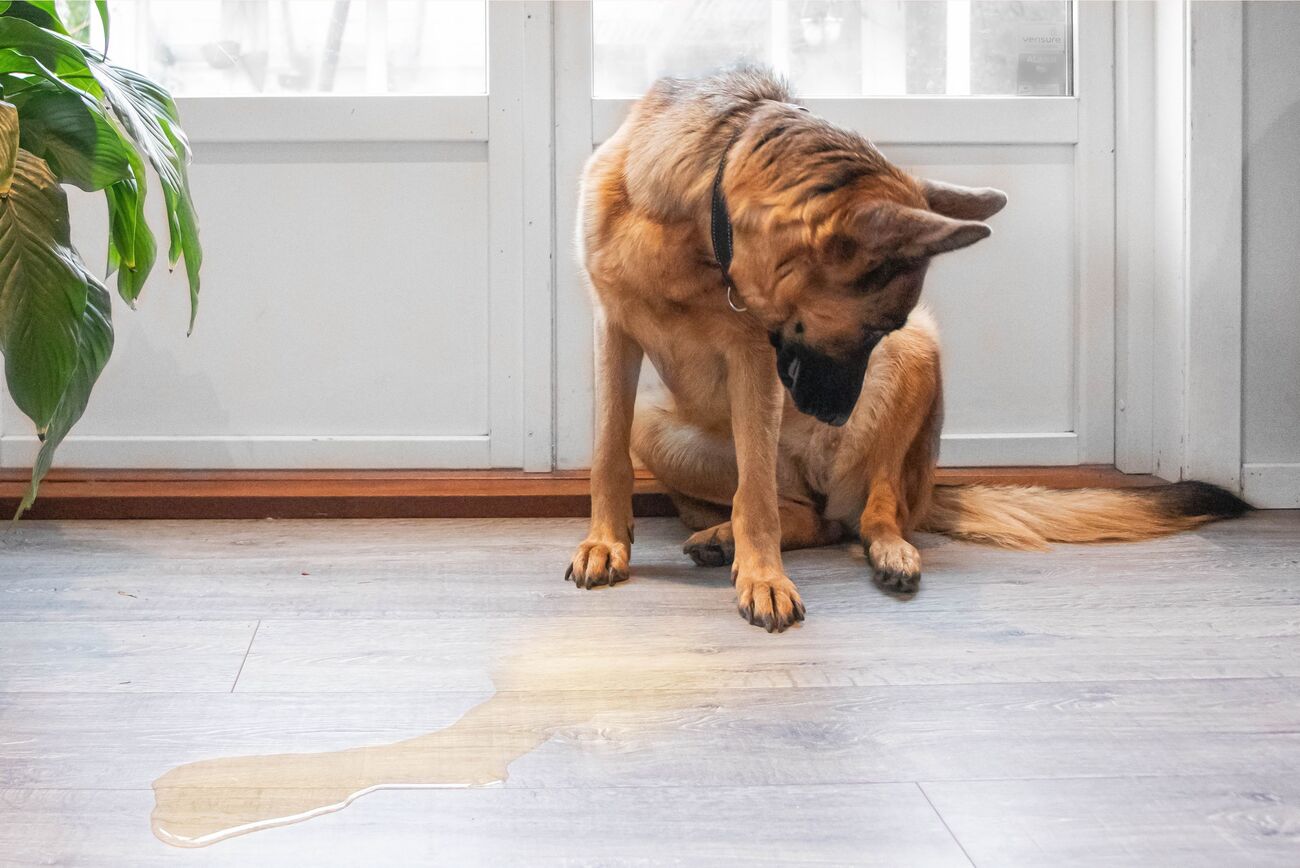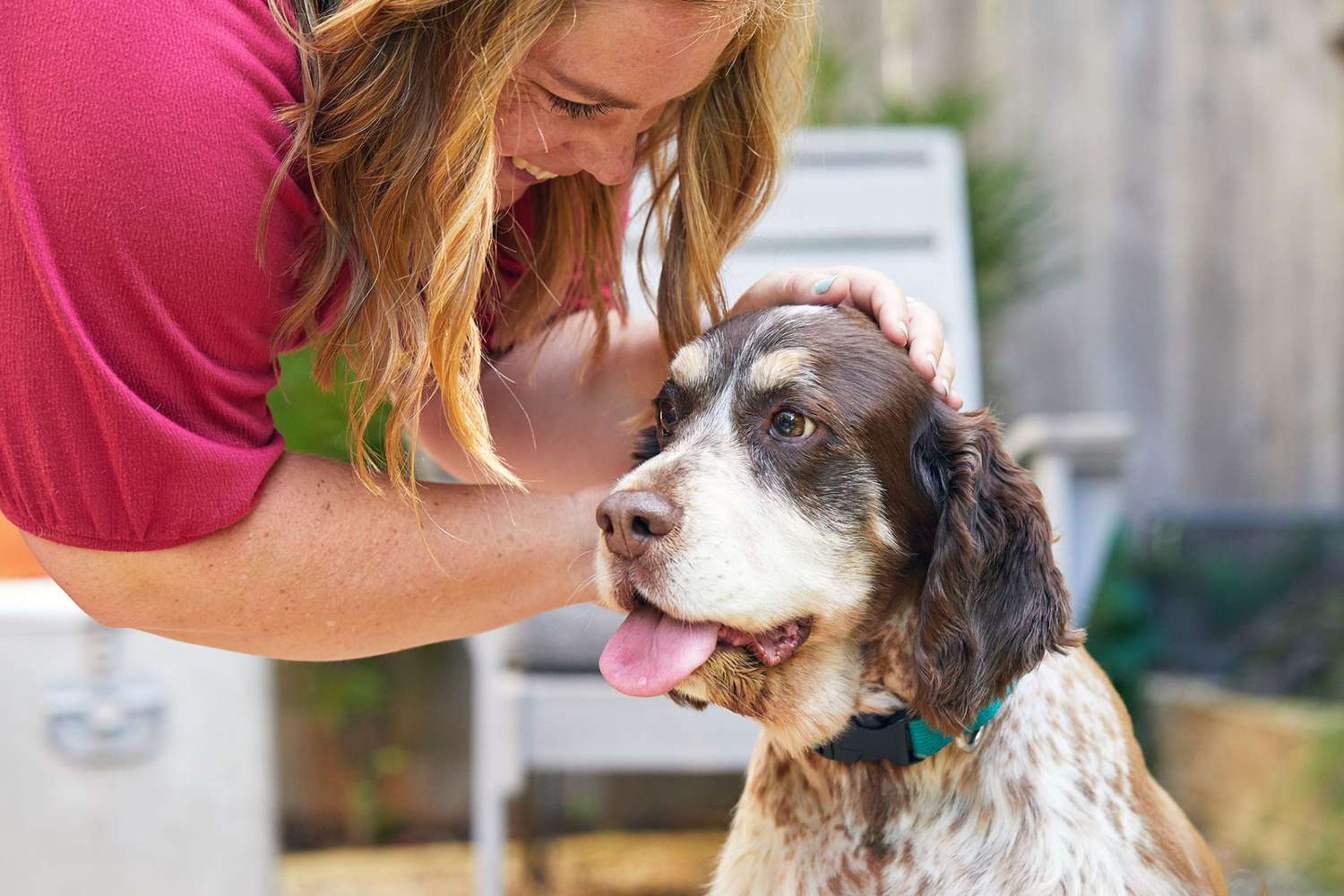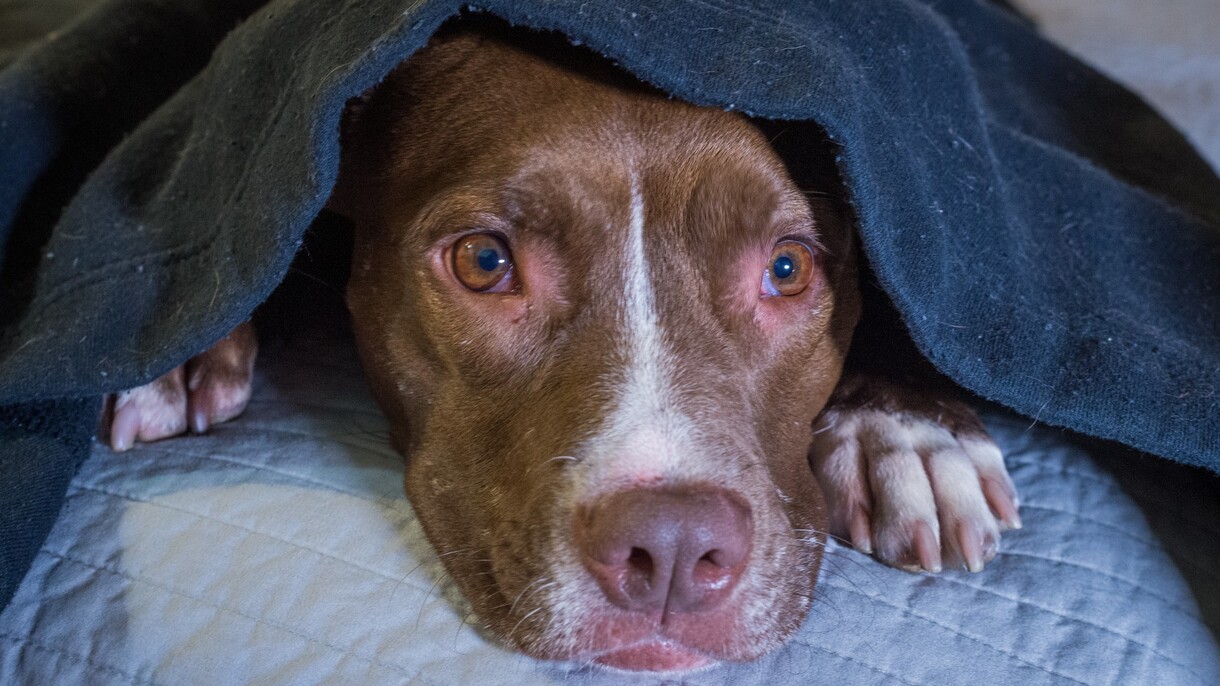Home>Health & Wellness>Behavior & Cognitive Care>How To Stop Dog Anxiety Peeing
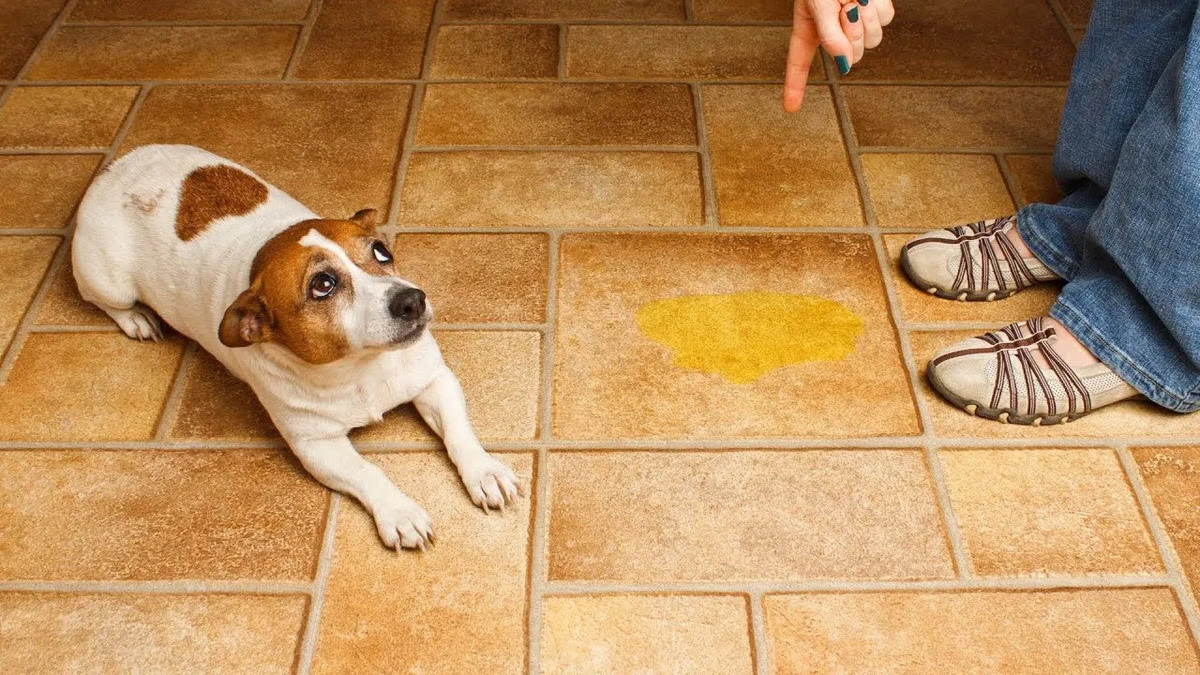

Behavior & Cognitive Care
How To Stop Dog Anxiety Peeing
Published: January 30, 2024
Learn effective strategies to stop dog anxiety peeing with behavior and cognitive care techniques. Discover proven methods to help your dog overcome anxiety-related urination issues.
(Many of the links in this article redirect to a specific reviewed product. Your purchase of these products through affiliate links helps to generate commission for Pawsomeoldies.com, at no extra cost. Learn more)
Table of Contents
Understanding Dog Anxiety Peeing
Dog anxiety peeing, also known as submissive urination, is a common behavioral issue among dogs that stems from feelings of fear, anxiety, or insecurity. When a dog exhibits this behavior, it often does so as a submissive gesture in response to perceived threats or stressful situations. Understanding the underlying causes and triggers of dog anxiety peeing is crucial in addressing and managing this issue effectively.
Submissive urination is typically seen in puppies and young dogs, although it can persist into adulthood if not properly addressed. It is important to recognize that this behavior is not a form of disobedience or defiance but rather a coping mechanism in response to perceived threats or social hierarchies within the household.
Dogs may exhibit anxiety peeing in various situations, such as when greeting their owners or other people, during moments of heightened excitement, or in response to intimidating postures or vocal tones. Understanding the specific triggers that lead to anxiety peeing in your dog is essential for implementing targeted interventions and creating a supportive environment to help alleviate their distress.
In addition to external triggers, internal factors such as genetics, temperament, and past experiences can contribute to a dog's propensity for anxiety peeing. Dogs with a naturally timid or submissive disposition may be more prone to this behavior, while those with a history of trauma or inadequate socialization may also exhibit heightened anxiety and insecurity.
By recognizing the nuanced nature of dog anxiety peeing and acknowledging the emotional vulnerability underlying this behavior, pet owners can approach their dogs' needs with empathy and patience. This understanding forms the foundation for implementing effective strategies to address and mitigate anxiety peeing in dogs, ultimately fostering a sense of security and well-being for our beloved canine companions.
Identifying Triggers for Dog Anxiety Peeing
Identifying the triggers for dog anxiety peeing is a crucial step in addressing and managing this behavior effectively. By recognizing the specific situations, stimuli, or interactions that elicit anxiety peeing in dogs, pet owners can implement targeted interventions to alleviate their furry companions' distress. Here are some common triggers to consider:
1. Greetings and Excitement
Dogs may exhibit anxiety peeing when greeting their owners, visitors, or other animals, especially in situations of heightened excitement. The anticipation of interaction, coupled with the presence of unfamiliar individuals or overwhelming stimuli, can trigger submissive urination as a response to perceived social pressure or uncertainty.
2. Intimidating Postures and Vocal Tones
Certain body language cues, such as direct eye contact, looming over the dog, or using harsh vocal tones, can evoke feelings of intimidation and submissiveness in dogs. These gestures may inadvertently trigger anxiety peeing, as the dog attempts to appease or submit to perceived threats within their environment.
3. Stressful Environments
Unfamiliar or stressful environments, such as crowded gatherings, noisy settings, or chaotic atmospheres, can overwhelm dogs and lead to anxiety peeing. The lack of predictability and control in these situations can heighten a dog's sense of vulnerability, prompting them to exhibit submissive urination as a coping mechanism.
Read more: How To Stop Anxiety-Induced Panting In Dogs
4. Previous Trauma or Negative Experiences
Dogs with a history of trauma, abuse, or inadequate socialization may be more susceptible to anxiety peeing. Past negative experiences can shape a dog's emotional responses and exacerbate their anxiety, leading to involuntary urination as a manifestation of their distress and insecurity.
5. Physical Discomfort or Illness
Underlying physical discomfort, such as urinary tract infections, gastrointestinal issues, or other health concerns, can contribute to anxiety peeing in dogs. It is essential to rule out potential medical causes and seek veterinary guidance to address any underlying health issues that may be impacting the dog's behavior.
By identifying these triggers and understanding the nuanced interplay between external stimuli, emotional responses, and individual predispositions, pet owners can proactively create a supportive and nurturing environment for their dogs. This awareness serves as a cornerstone for implementing tailored strategies to mitigate anxiety peeing and promote a sense of emotional well-being and security for our canine companions.
Creating a Safe and Comfortable Environment for Your Dog
Creating a safe and comfortable environment for your dog is essential in addressing and managing anxiety peeing. By fostering a supportive and nurturing setting, pet owners can help alleviate their dog's distress and promote a sense of emotional well-being and security. Here are some effective strategies to create a safe and comfortable environment for your dog:
1. Establishing Predictability and Routine
Consistency and predictability play a pivotal role in reducing anxiety and promoting a sense of security for dogs. Establishing a regular daily routine for feeding, exercise, and rest can provide a structured environment that helps alleviate stress and uncertainty. By adhering to a consistent schedule, pet owners can create a stable and predictable routine that supports their dog's emotional well-being.
2. Designating Safe Spaces
Designating specific safe spaces within the home where your dog can retreat to when feeling overwhelmed or anxious is crucial. These areas should be quiet, comfortable, and equipped with familiar bedding or toys to provide a sense of security. Whether it's a cozy corner, a designated crate, or a secluded room, having a safe space allows dogs to seek refuge and regain composure during moments of distress.
3. Minimizing Stressful Stimuli
Identifying and minimizing stressful stimuli in your dog's environment can significantly reduce anxiety and mitigate the likelihood of anxiety peeing. This may involve reducing exposure to loud noises, unfamiliar visitors, or overwhelming activities that trigger anxiety. By creating a calm and controlled environment, pet owners can help their dogs feel more at ease and less prone to exhibiting submissive urination.
4. Positive Reinforcement and Encouragement
Utilizing positive reinforcement techniques to encourage desirable behaviors and build confidence in dogs is instrumental in creating a supportive environment. Rewarding calm and confident behavior with treats, praise, and affection reinforces a positive emotional state and fosters a sense of security. By focusing on positive interactions and experiences, pet owners can help their dogs feel more assured and less susceptible to anxiety peeing.
5. Regular Exercise and Mental Stimulation
Engaging dogs in regular physical exercise and mental stimulation not only promotes their overall well-being but also helps alleviate anxiety and stress. Physical activity and interactive play sessions provide an outlet for pent-up energy and anxiety, while mental stimulation through enrichment activities and training exercises can help build confidence and resilience in dogs.
By implementing these strategies and creating a safe and comfortable environment for your dog, you can significantly reduce anxiety peeing and enhance your dog's emotional well-being. Understanding the importance of a supportive environment and actively addressing your dog's emotional needs fosters a harmonious and secure living space for both you and your beloved canine companion.
Read more: How To Stop An Anxiety Attack In Dogs
Using Positive Reinforcement and Training Techniques
Positive reinforcement and effective training techniques play a pivotal role in addressing and mitigating dog anxiety peeing. By leveraging these strategies, pet owners can foster a supportive and nurturing environment that promotes confidence, resilience, and emotional well-being in their dogs.
1. Consistent Positive Reinforcement
Consistent positive reinforcement involves rewarding desired behaviors with treats, praise, and affection to reinforce a positive emotional state in dogs. When addressing anxiety peeing, it is essential to acknowledge and reward instances of calm and confident behavior. By doing so, pet owners can help their dogs associate positive experiences with specific situations, gradually reducing their anxiety and propensity for submissive urination.
2. Desensitization and Counterconditioning
Desensitization and counterconditioning techniques are valuable tools in addressing anxiety peeing triggered by specific stimuli or situations. By gradually exposing dogs to triggering stimuli in a controlled and positive manner, while simultaneously providing rewards and reassurance, pet owners can help their dogs build tolerance and confidence. This gradual approach allows dogs to reframe their emotional responses, ultimately reducing their anxiety and submissive urination in challenging scenarios.
3. Obedience Training and Confidence Building
Engaging dogs in obedience training and confidence-building exercises can significantly impact their emotional resilience and self-assurance. Teaching basic obedience commands and engaging in confidence-building activities, such as agility training or interactive games, helps dogs develop a sense of control and mastery over their environment. This, in turn, fosters confidence and reduces their susceptibility to anxiety peeing as they gain a greater sense of security and self-assuredness.
Read more: How To Stop Dog Whining Due To Anxiety
4. Avoiding Punitive Measures
It is crucial to emphasize the avoidance of punitive measures when addressing anxiety peeing. Punishment or scolding in response to submissive urination can exacerbate a dog's anxiety and undermine trust, potentially worsening the behavior. Instead, focusing on positive reinforcement and compassionate training techniques creates a supportive and trusting dynamic between pet owners and their dogs, facilitating a more effective and sustainable approach to managing anxiety peeing.
5. Seeking Professional Guidance
In cases where anxiety peeing persists despite consistent efforts, seeking professional guidance from certified dog trainers or animal behaviorists is advisable. These experts can provide tailored strategies and personalized guidance to address the underlying causes of anxiety peeing and implement effective behavior modification techniques. Professional support can offer invaluable insights and resources to help pet owners navigate and overcome the challenges associated with anxiety peeing in their dogs.
By integrating positive reinforcement and training techniques into their approach, pet owners can empower their dogs to overcome anxiety peeing and cultivate a more confident and emotionally resilient demeanor. This proactive and compassionate approach not only addresses the immediate behavior but also nurtures a harmonious and supportive bond between pet owners and their beloved canine companions.
Seeking Professional Help and Support
Seeking professional help and support is a crucial step for pet owners dealing with persistent or complex cases of dog anxiety peeing. While proactive measures and home-based interventions are valuable, the expertise and guidance of certified dog trainers, animal behaviorists, or veterinary professionals can offer invaluable insights and tailored strategies to address this behavioral issue effectively.
Professional assessment: Certified dog trainers and animal behaviorists possess specialized knowledge in understanding canine behavior and addressing complex behavioral challenges. When confronted with chronic anxiety peeing in dogs, seeking a professional assessment allows pet owners to gain a comprehensive understanding of the underlying triggers and contributing factors. Through detailed behavioral evaluations and observations, professionals can identify nuanced behavioral patterns and emotional cues, enabling them to formulate targeted intervention plans tailored to the specific needs of the dog.
Behavior modification techniques: Professional experts are equipped with a diverse range of behavior modification techniques designed to address anxiety peeing in dogs. These techniques may include desensitization protocols, counterconditioning exercises, and structured training programs aimed at reshaping the dog's emotional responses and building confidence in anxiety-inducing situations. By implementing evidence-based behavior modification strategies, professionals can guide pet owners in systematically addressing and mitigating anxiety peeing, fostering positive behavioral changes in their dogs.
Personalized guidance and support: Professional support offers pet owners personalized guidance and ongoing support throughout the behavior modification process. Certified professionals can collaborate with pet owners to develop tailored management plans, provide hands-on training demonstrations, and offer continuous feedback and adjustments based on the dog's progress. This personalized approach ensures that pet owners receive comprehensive support and resources to navigate the complexities of anxiety peeing, empowering them to implement effective strategies with confidence and clarity.
Medical considerations: In some instances, anxiety peeing in dogs may be influenced by underlying medical conditions or health concerns. Veterinary professionals play a critical role in ruling out potential medical causes and addressing any physiological factors contributing to the behavior. Seeking veterinary guidance ensures that any underlying health issues impacting the dog's emotional well-being are identified and addressed, complementing the behavioral interventions implemented by certified professionals.
By seeking professional help and support, pet owners can access the expertise, resources, and personalized guidance necessary to address anxiety peeing in their dogs comprehensively. This collaborative approach not only enhances the well-being of the dog but also empowers pet owners to navigate and overcome the challenges associated with this behavioral issue, fostering a harmonious and supportive environment for their beloved canine companions.
